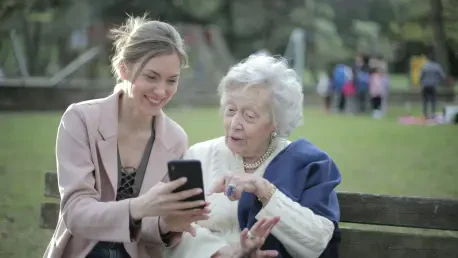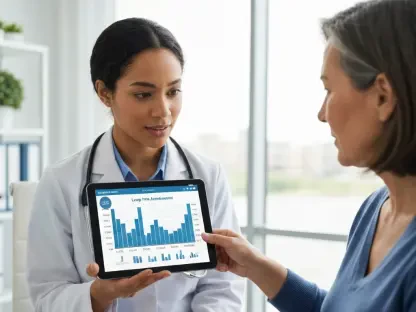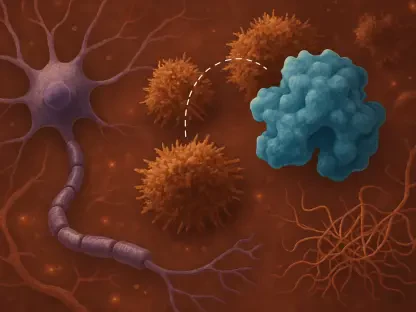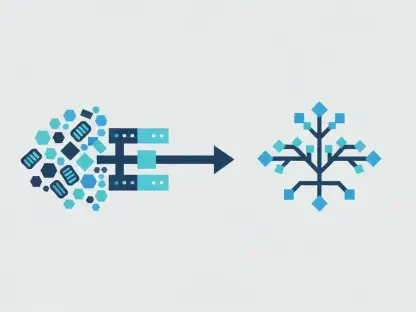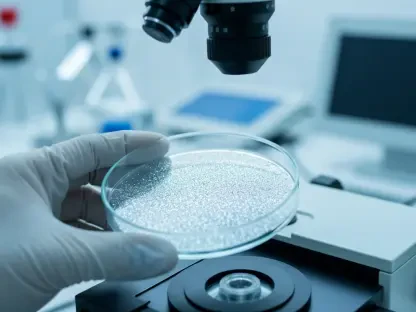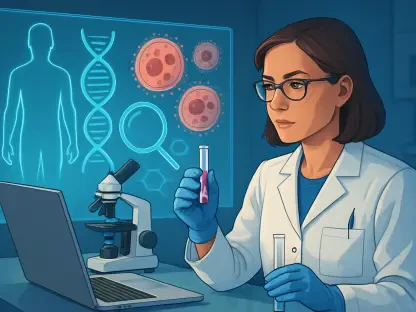Imagine a world where Alzheimer’s disease can be anticipated years before its debilitating symptoms manifest, allowing for timely intervention that could change the course of an individual’s life. This could soon be a reality, thanks to the groundbreaking work of Dr. Hamilton Se-Hwee Oh, whose research into the brain-body connection is redefining what we know about neurodegenerative diseases.
Uncovering the Brain-Body Connection’s Crucial Role
Understanding the brain-body dialogue is vital in tackling Alzheimer’s disease, a pressing global health concern with rising incidence rates. The urgency for innovative research methods is underscored by aging populations and unprecedented healthcare challenges. Conventional approaches have yet to yield significant breakthroughs, necessitating exploration beyond the confines of traditional neuroscientific paradigms.
Dr. Oh’s Pioneering Discoveries
Dr. Hamilton Se-Hwee Oh’s research has uncovered revelatory insights into how our bodies and brains communicate. Among his most significant findings are synaptic biomarkers within cerebrospinal fluid that can predict the onset of Alzheimer’s before clinical signs emerge. His work illustrates that human organs do not age uniformly, impacting their susceptibility to ailments such as Alzheimer’s disease. Such findings could transform preventive strategies and treatments, emphasizing the importance of organ-specific profiles in medical assessments.
Insights from Experts and Influences on Real Lives
In conversations with Dr. Oh and his colleagues, the depth and potential impact of these discoveries become clear. Dr. Oh has emphasized that his innovative research aims to unravel complex cellular interactions that influence aging and mental health. Notably, his work has been published in esteemed journals like Nature and Nature Medicine, validating its significance in the field. Stories from families already benefiting from these discoveries illustrate the profound effects this research could have on individuals worldwide.
From Research to Real-World Application
Dr. Oh’s revelations open the door to revolutionary applications in both clinical and research settings. These insights could lead to early intervention strategies and the formulation of personalized treatment plans, tailored to an individual’s unique aging profile. Understanding how different organs age distinctly might also guide more accurate predictions of Alzheimer’s susceptibility, prompting preemptive healthcare protocols to manage risk factors effectively.
The Future of Alzheimer’s Care
Dr. Oh’s work has shown that the past limitations in Alzheimer’s research could be overcome by fostering a deeper understanding of the intricate web linking the brain and body. Future advancements could focus on translating these findings into actionable healthcare strategies, transforming diagnostic, preventive, and therapeutic practices. Additionally, as research continues, exploring other potential organ interactions with the brain may further enhance the prognosis of neurodegenerative diseases.
